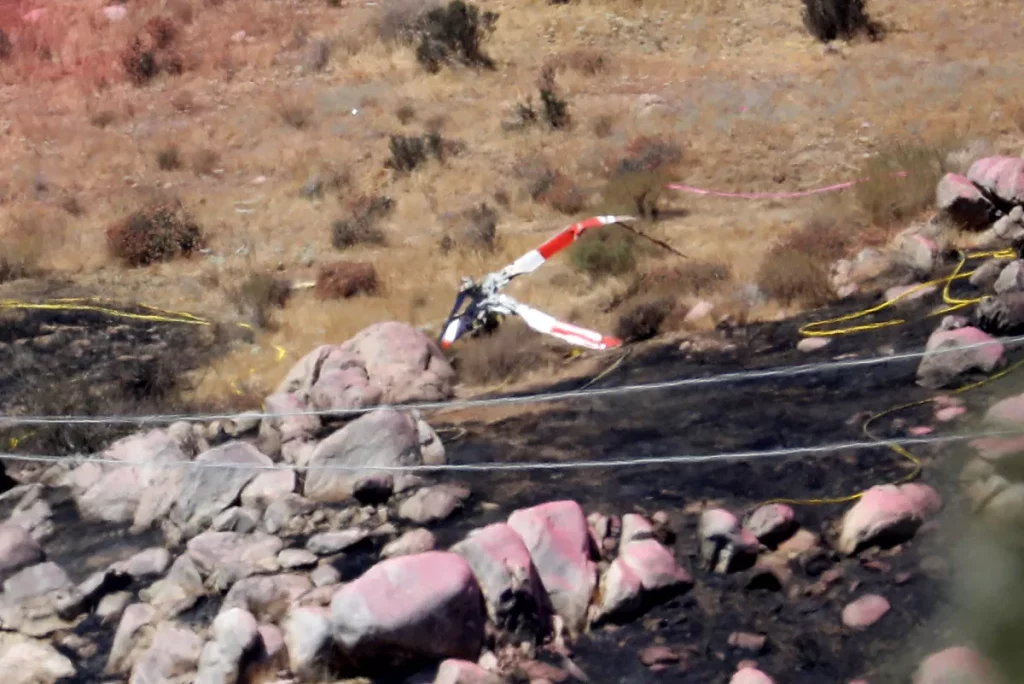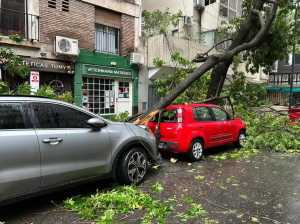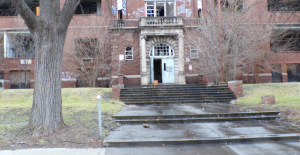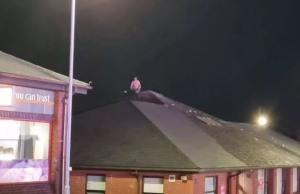
According to at least one ex-wildland fire pilot, the electronic device used to alert pilots of approaching aircraft from two firefighting helis colliding midair above a Southern California brushfire was not present on one helicopter.
Two helicopters operated by the California Department of Forestry and Fire Protection were involved in a fatal crash on August 6. A career pilot who is a proponent of collision avoidance technology said that one helicopter did not have a TCAS (traffic collision avoidance system), which alerts the pilots audibly when an aircraft approaches.
Former U.S. Forest Service Pilot who now flies Boeing 777s from Los Angeles out for a major carrier said he was shocked this wasn’t required today on helicopters under contract.
He told me, “That was the only piece of safety gear that could have avoided this accident.” “.
All Cal Fire aircraft are equipped with transponders and surveillance system as standard. TCAS is described in the Forest Service Smokejumpers Guide as an “invaluable safety tool”. However, it can only be utilized if every aircraft has transponders.
According to an aviation expert, The Times reported that this system is designed for fixed-wing aircraft but less effective for helicopters.
Experts asked how situational awareness could have broken down, causing crew members to lose track of each other.
Around an hour before the sunset, crews on the ground and commanding officers working a small brushfire in Cabazon (Riverside County) heard something horribly go wrong over their radios.
The voice said: “Midair Collision with Two Copters, 37 Sierra, and 5 Alpha Sierra,” in reference to the callsigns of the aircraft.
Both helicopters flew over mountains and reached the valley in just minutes after leaving Hemet-Ryan Airport. This was a Cal Fire Air Attack Base located about 18 miles from the fire. According to flight tracking sites, the helicopters collided within 15 minutes of takeoff. They were only a few hundred feet above the ground.
The two passengers walked off after the water-dropping Sikorsky S-64E Skycrane landed hard in a field nearby.
Cal Fire’s Assistant Chief Joshua Bischof (46), Capt. Tim Rodriguez (44); and pilot Tony Sousa (55).
A preliminary NTSB report will be published as soon as tomorrow. It is estimated that the full investigation will take one to two years.
A spokesperson from the NTSB stated that the investigation will examine all the factors of the crash including the human, mechanical, and environmental factors. According to The Times, investigators must determine why both aircraft failed to recognize their proximity prior to the accident.
The Cabazon Fire caused Southern California to have a congested airspace.
It is possible that the fire, burning near the Banning Municipal Airport caused the pilots to be distracted by changing frequencies in order to cope with air traffic. Three airplanes, three helicopters were sent to the scene. The fire was close to Banning Municipal Airport.
The San Jacinto Mountains may have cast shadows even though it was a clear day.
Browne explained that the two helicopters are likely to have blind spots because of their design and layout.
The Bell’s silver color made it difficult to spot. Cal Fire planes are typically red and white.
Browne’s popular YouTube channel posted a video that reconstructed this collision from flight tracking data. Browne believes that the Bell’s blades and rotor may have detached from the remainder of the plane when they came in contact with Skycrane landing gear. The crash site shows that the helicopter rotor was far away from the fuselage.
Hunt Norris is the general manager at Siller Helicopters in Yuba City. He said that there was minor damage to the Skycrane’s landing gear.
It is still unclear why helicopters were flying at the same height.
Cal Fire officials said that they have procedures to make sure aircraft communicate with one another and maintain a proper separation at altitude. Before aircraft are sent to an incident, air tactical group supervisors inform the pilots about their altitude and responsibilities.
Jack Cress of USC, an instructor on helicopter accident investigations, said that there wasn’t any altitude conflict in this incident. Cal Fire spends a great deal of time planning how to bring the aircraft to the incident.
To determine what happened, investigators will look at the visibility both optically and electronically of the helicopters. They’ll also examine what instruments were onboard that could have prevented the crash.
Two key items are required in this regard. Air traffic control ground stations and other aircraft that have the equipment installed transmit information about an aircraft’s altitude, positioning, and speed via the Automatic Dependent Surveillance-Broadcast, or ADS-B. According to him, this technology is installed on all helicopters used by civilians.
He said that a traffic collision-avoidance system will alert pilots to the presence of another aircraft and give them instructions on how they can avoid it. This could be by turning around, ascending or descending.
According to Hassan Shahidi of Flight Safety Foundation, the Federal Aviation Administration doesn’t require TCAS for helicopters.
Nick Schuler is Cal Fire’s deputy Director of Communications and Emergency Incident Awareness. He says that the agency doesn’t require TCAS on all contract aircraft.
Cal Fire requires that aircraft and their pilots obtain Interagency Qualification Cards issued by Forest Service, U.S. Department of Interior, or Cal Fire. Schuler said that only helicopters with the authority to transport passengers other than essential flight crew must install TCAS.
The Bell 407 met the standard and had TCAS, unlike the Skycrane which wasn’t authorized to transport non-essential passengers.
TCAS will only alert both aircraft if they have TCAS on and transponders activated.
Browne stated, “I have fought my entire career for TCAS and we are slowly integrating into the Firefighting Command.”
Browne has recounted his experience in a video on YouTube, in which he describes losing a co-pilot during a mid-air collision while flying C-141 transport aircraft for the U.S. Air Force. After surviving relatives and colleagues successfully lobbied the government to install TCAS.
Browne, while a Forest Service pilot and lead pilot of the planes, assumed the role of a pilot that died mid-air in Ramona after responding to an fire in 1995. After more lobbying by him, TCAS was fitted to the fixed-wing tankers of his agency.
Shahidi skepticism Browne’s claims that TCAS would have been able to prevent the collision.
He said that the TCAS is intended for fixed-wing aircraft with flight paths predetermined. The technology would not benefit firefighting helicopters that are very maneuverable, operate in low altitudes at high speed, and work close together during emergencies.
Shahidi stated that these alerts would go off constantly with warnings for the pilots to increase or decrease altitudes. This would be counterproductive to the pilots.
He said that in such an environment it’s important to have a central command and control that can manage the restricted airspace, and make sure that all aircraft know their location and are in position. ADS-B, which provides a visual indication but does not send alerts to pilots or ground controllers about aircraft position, would help them as well.
“These are the tools that we’ll need to stop tragedies such as this, when a pilot loses situational awareness and crashes because they don’t know what is around them,” said he.
Smoke also leaves behind toxic residues, which can be harmful to health and lead to secondary damages like staining and corrosion. Smoke damage cleanup services is essential to minimize the damage and effectively restore your property. If you want to see more of our available services go here https://ncrestoration.ca/ Professional restoration services will help you achieve a complete recovery.





